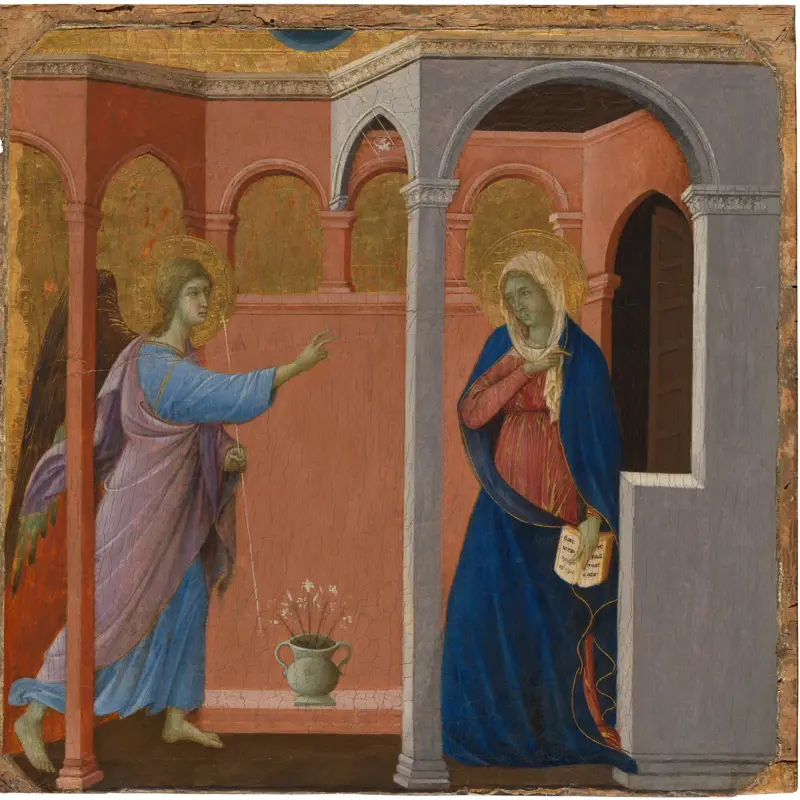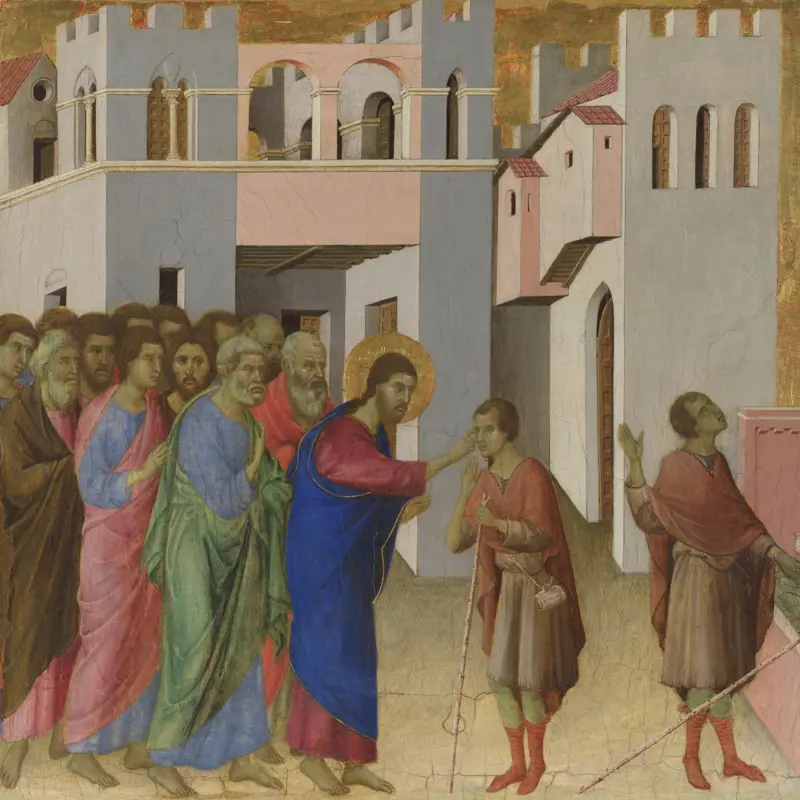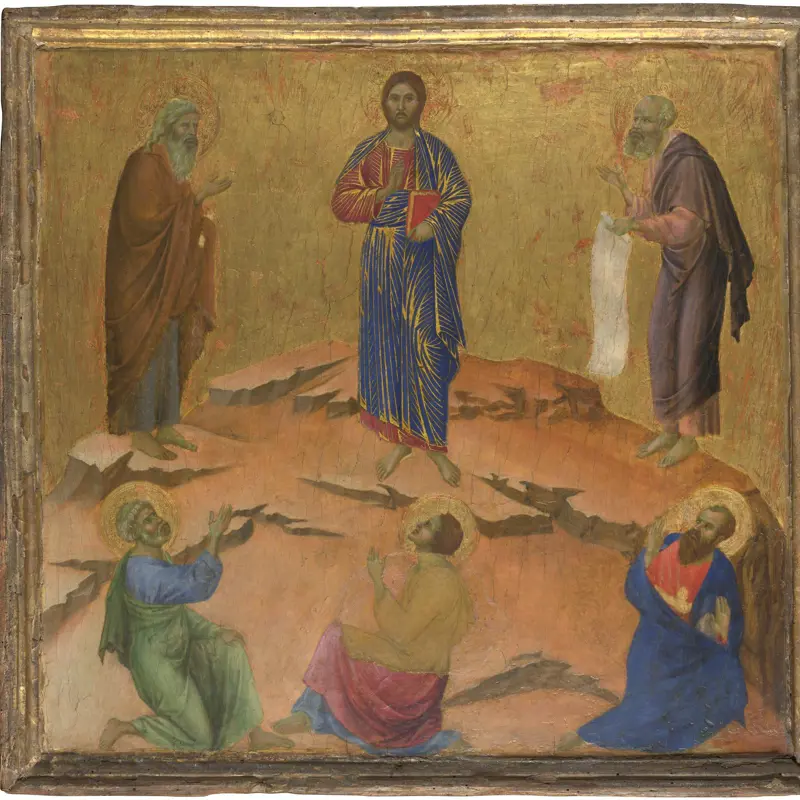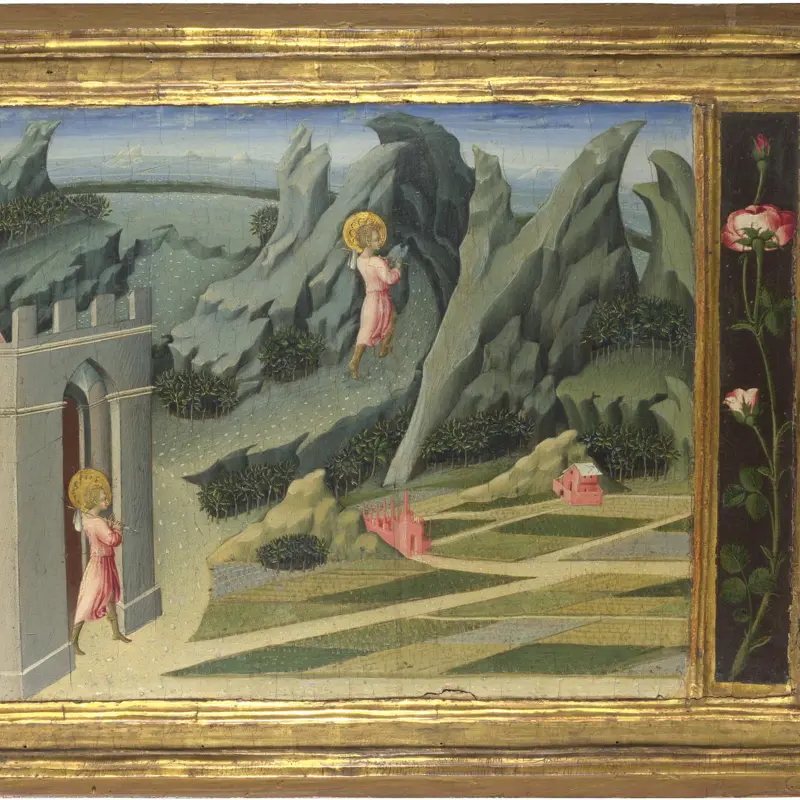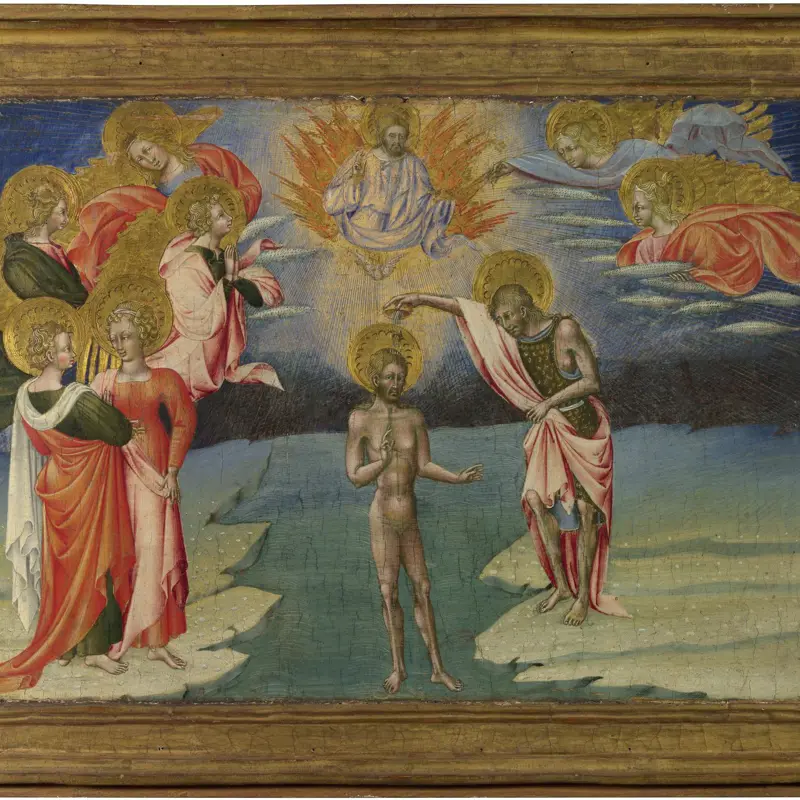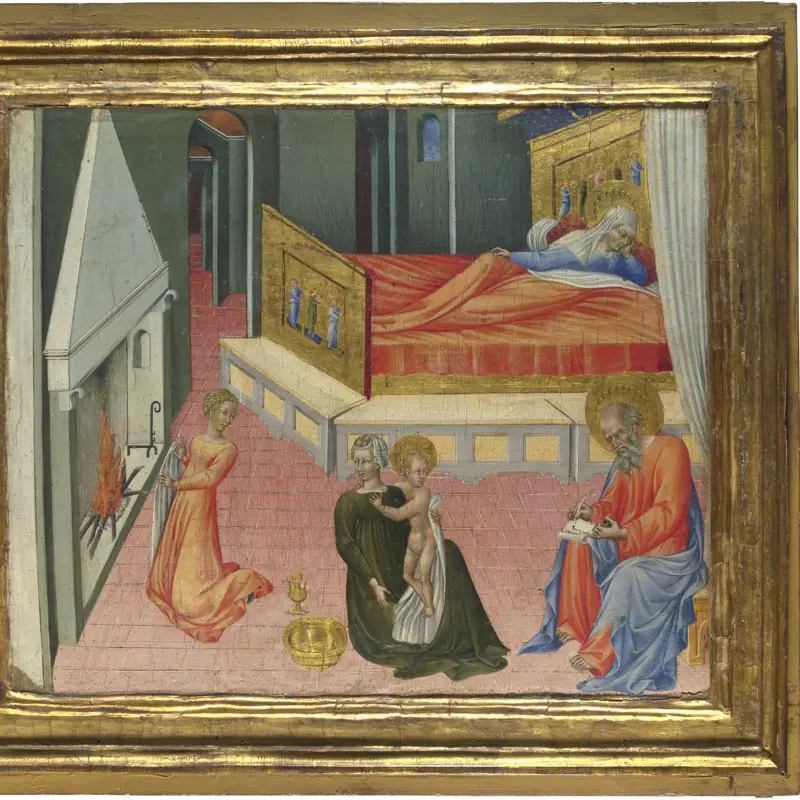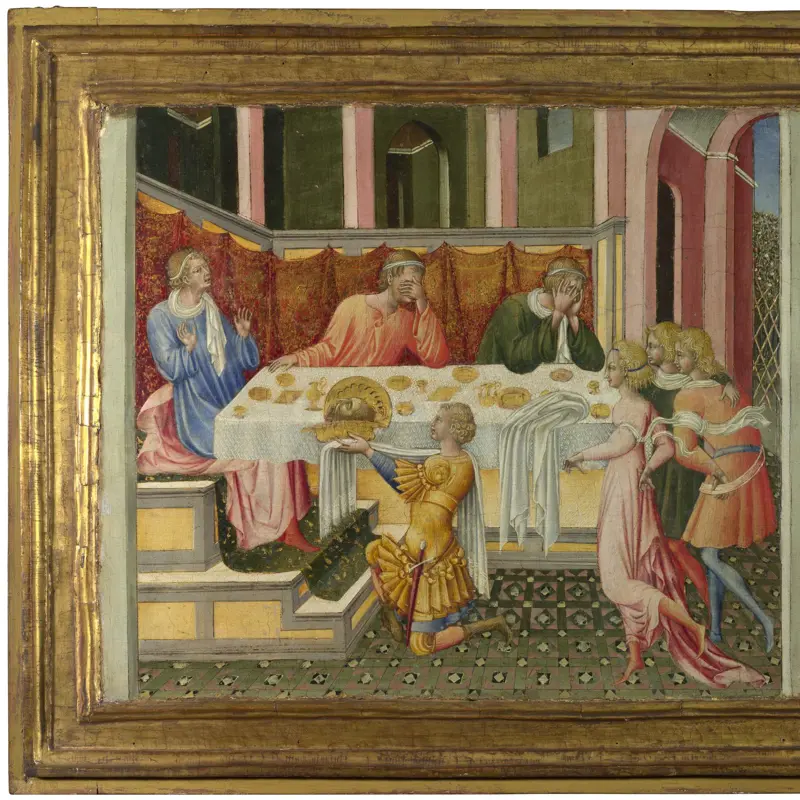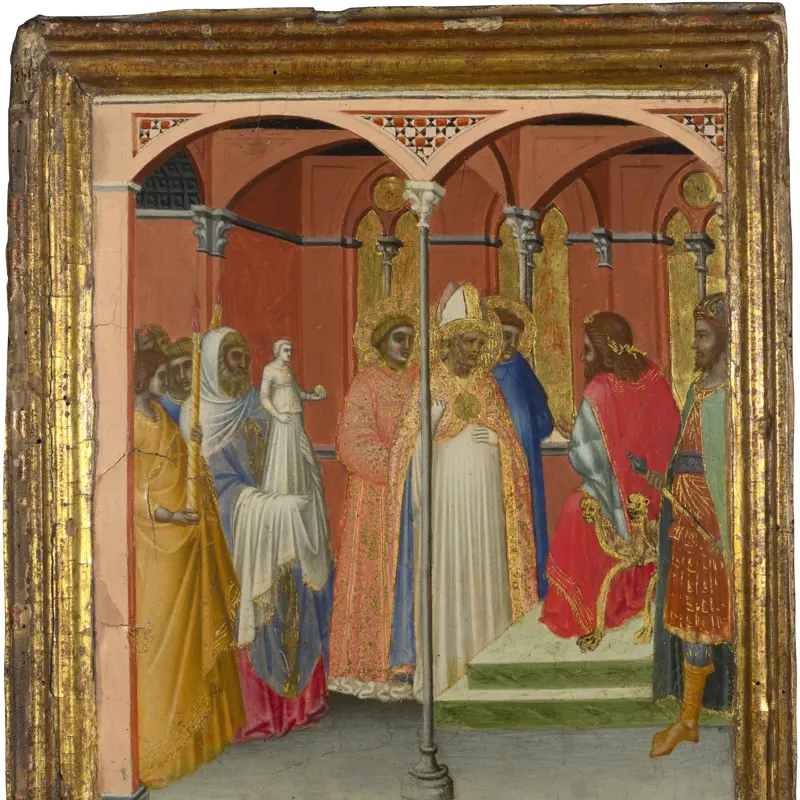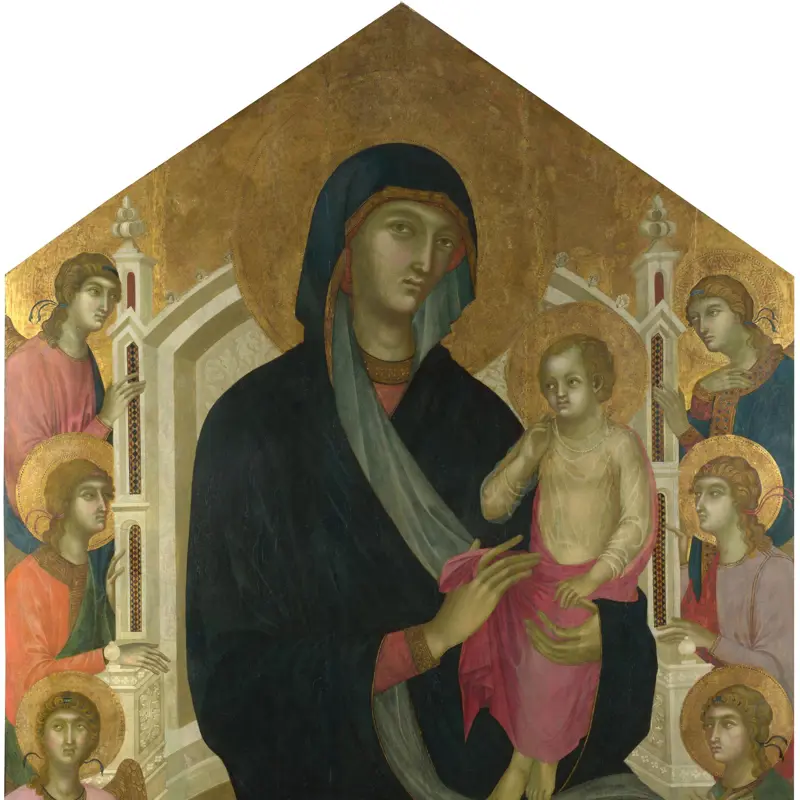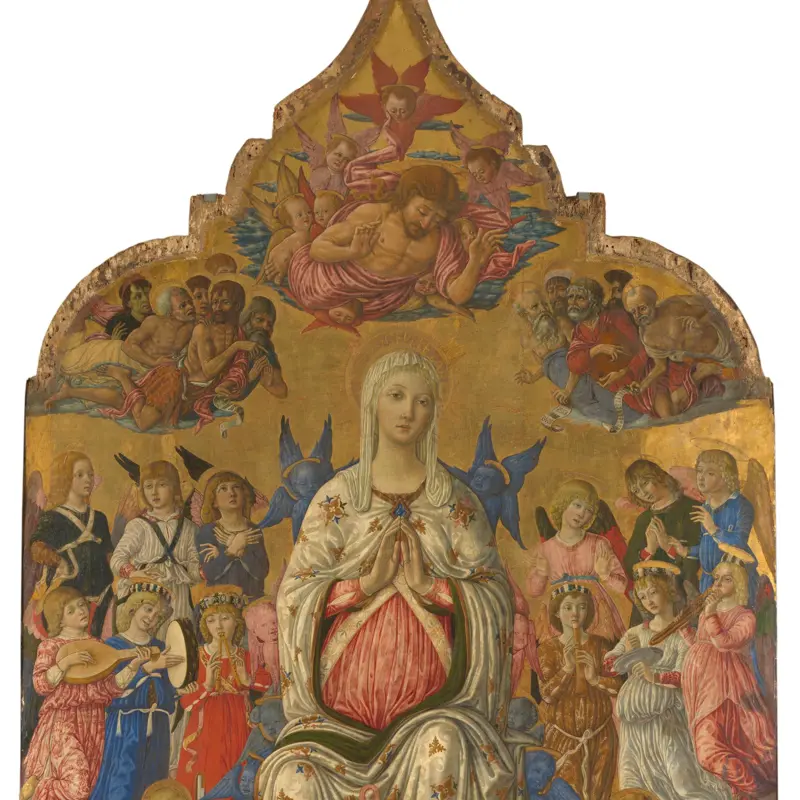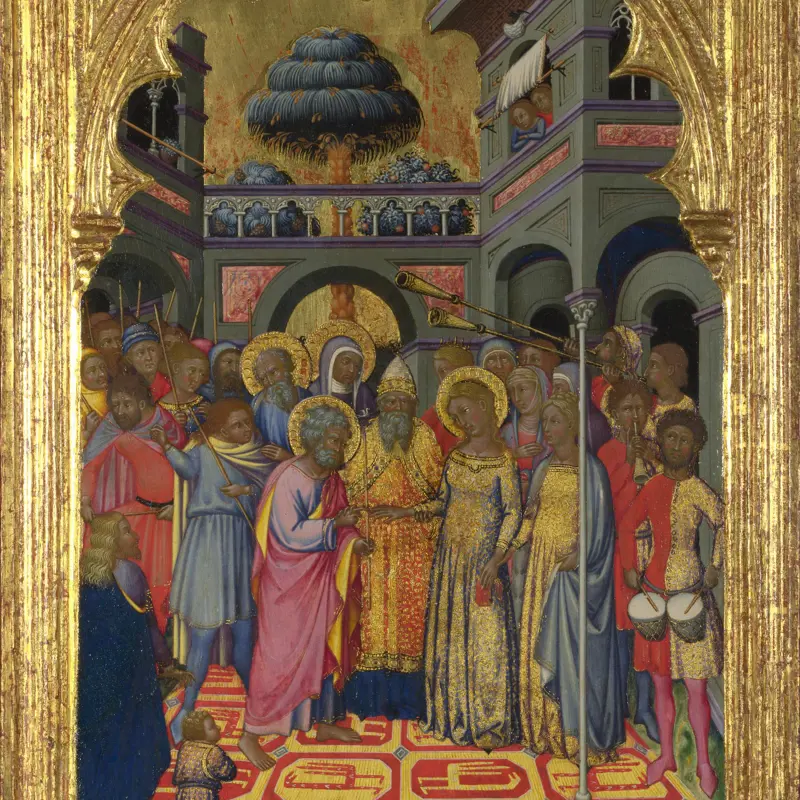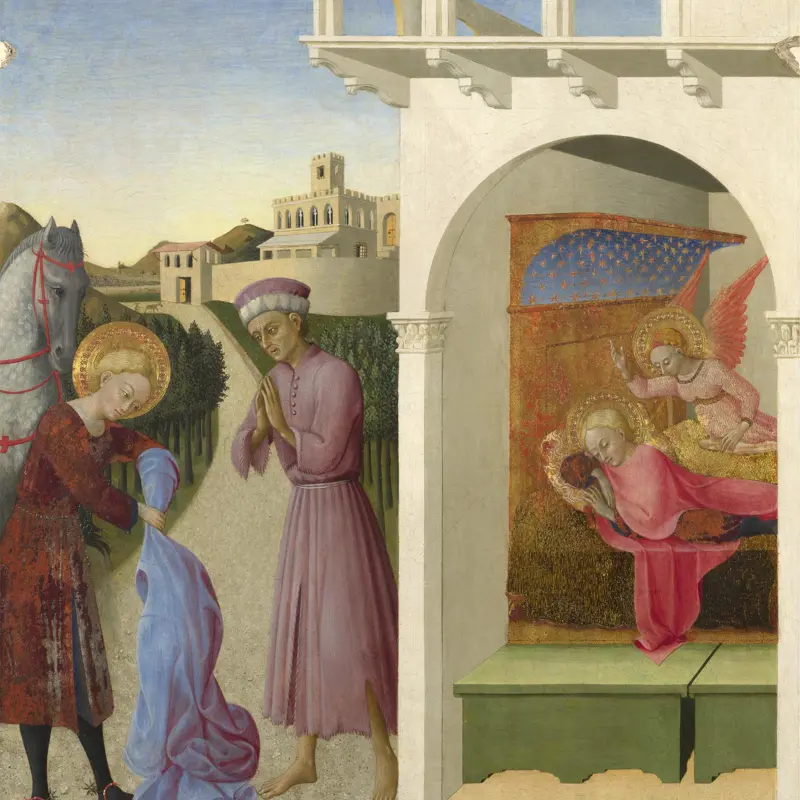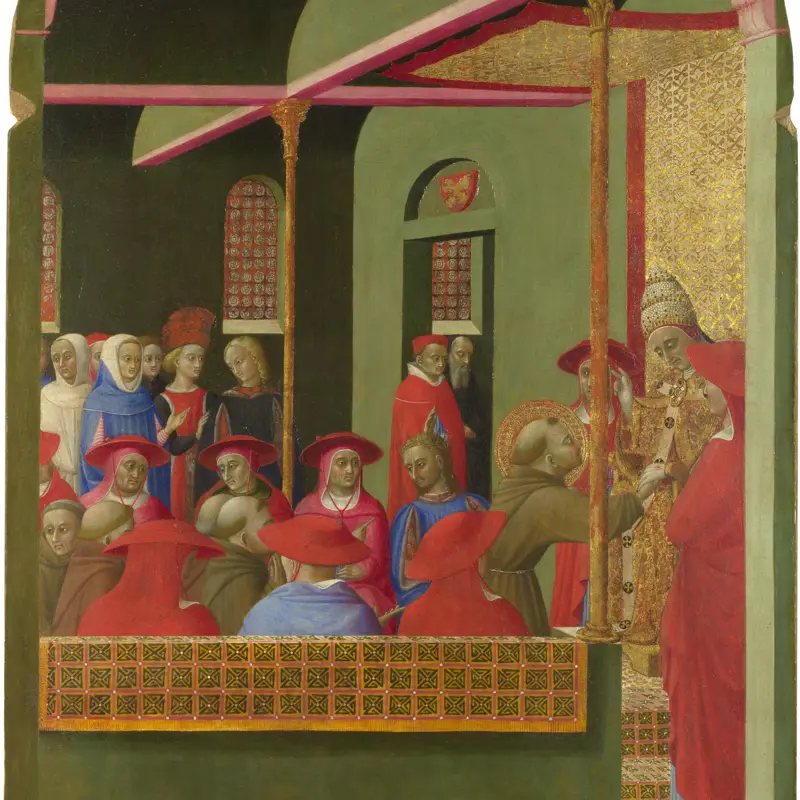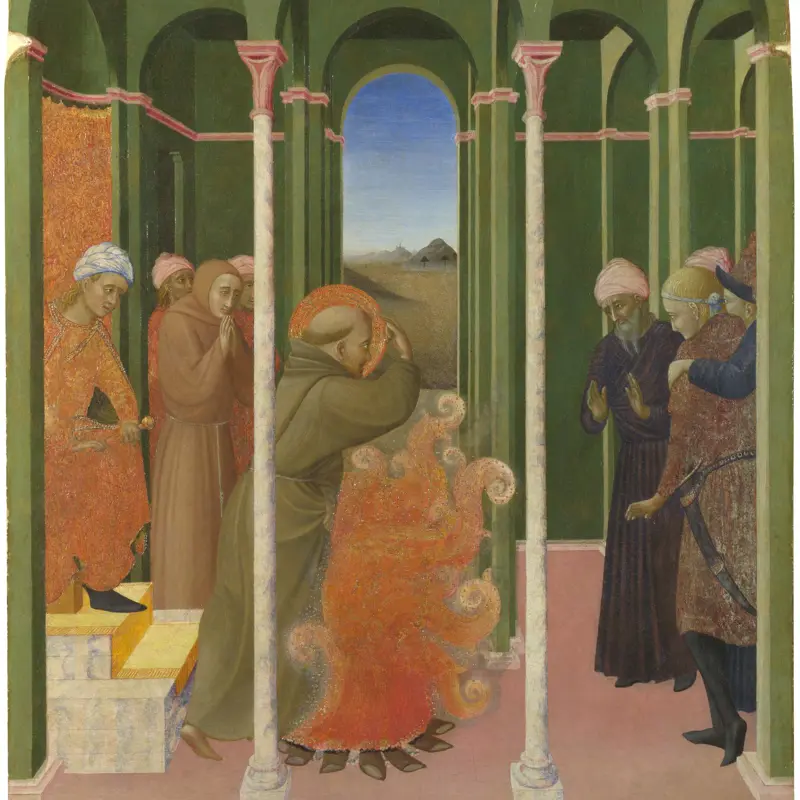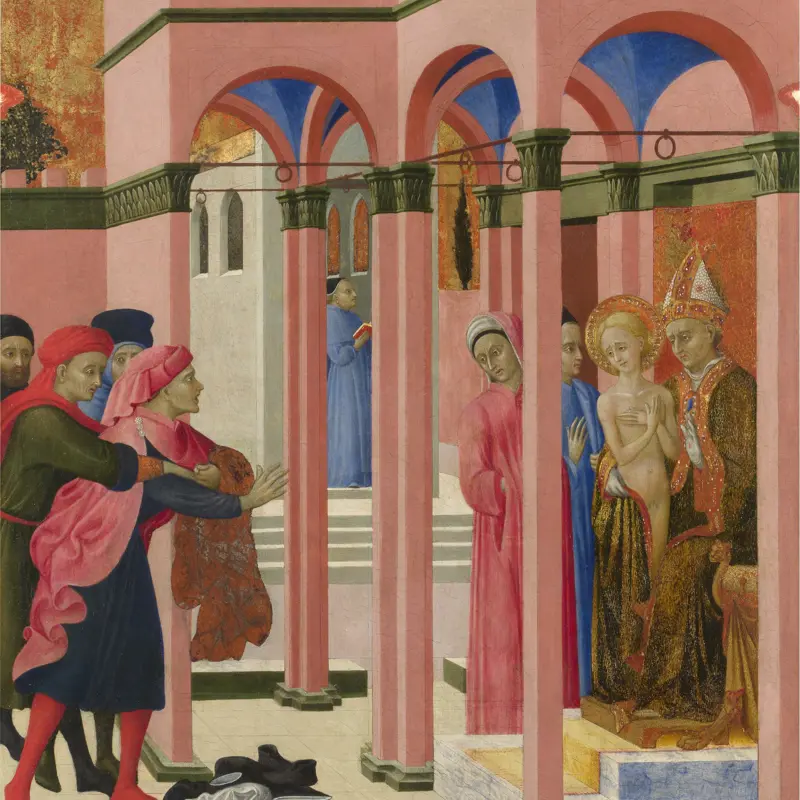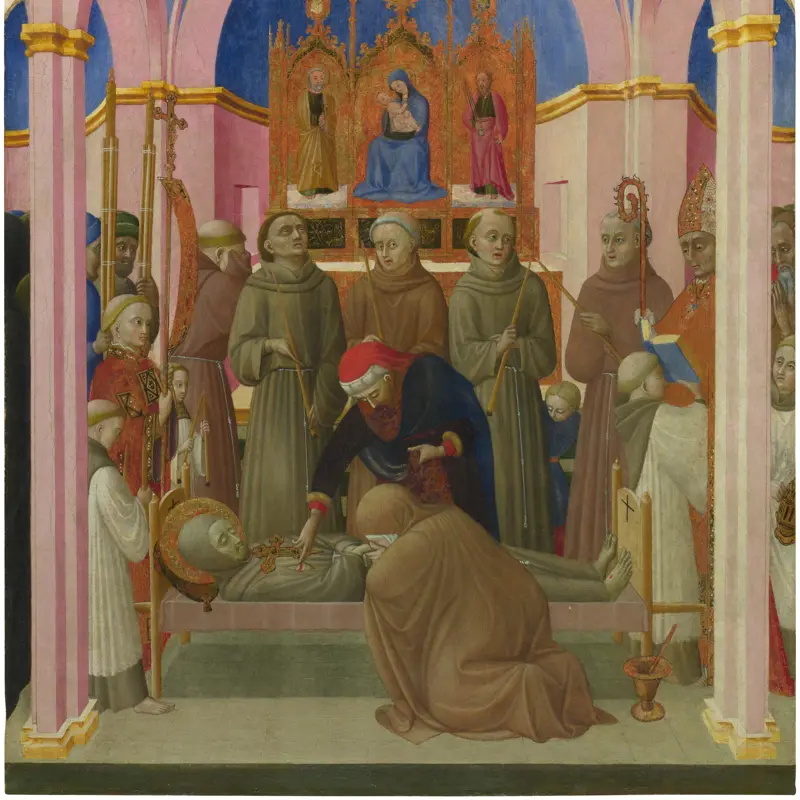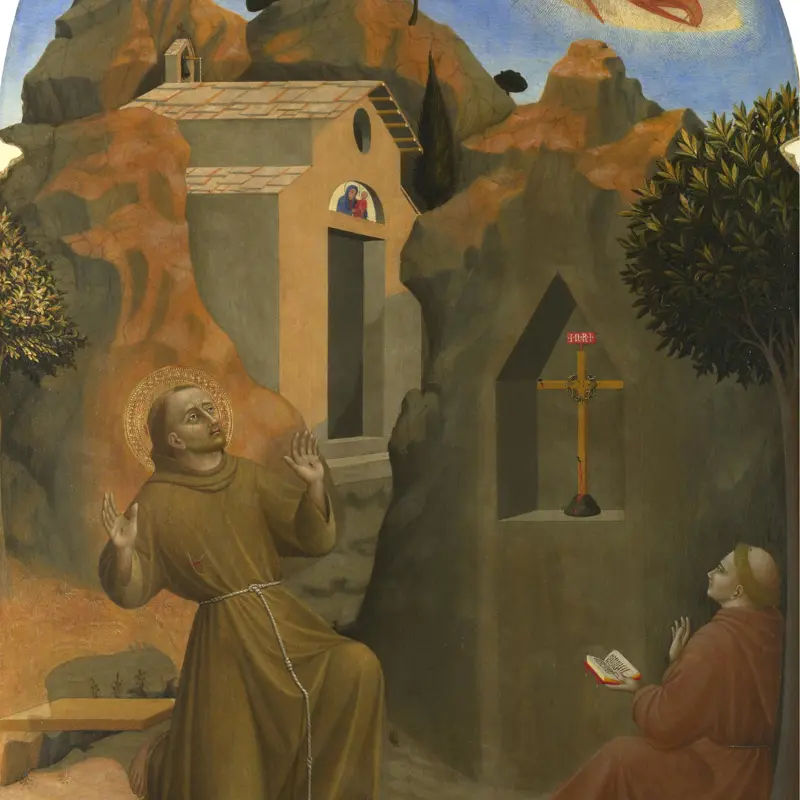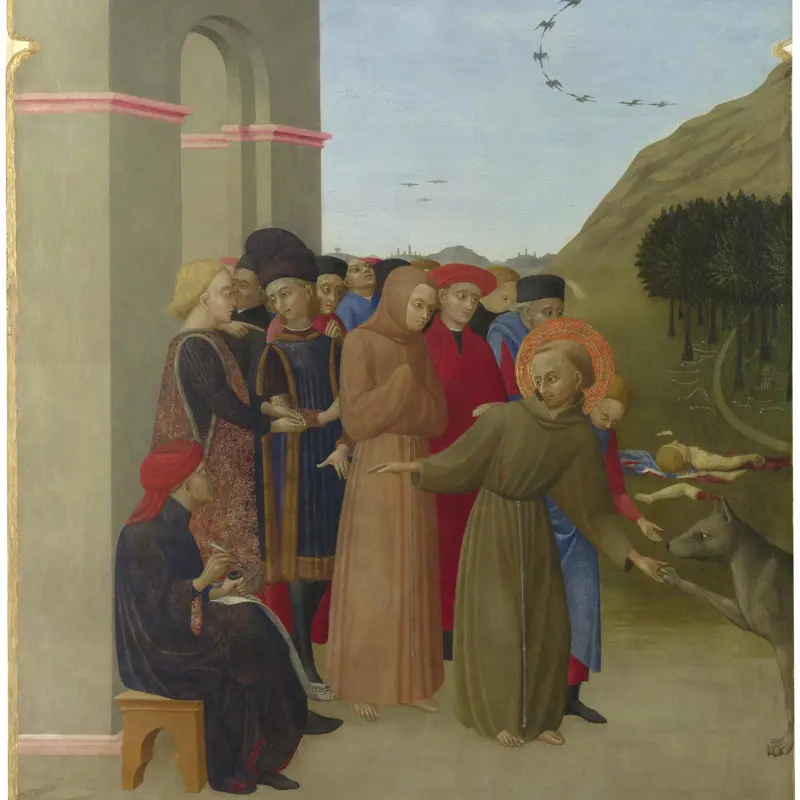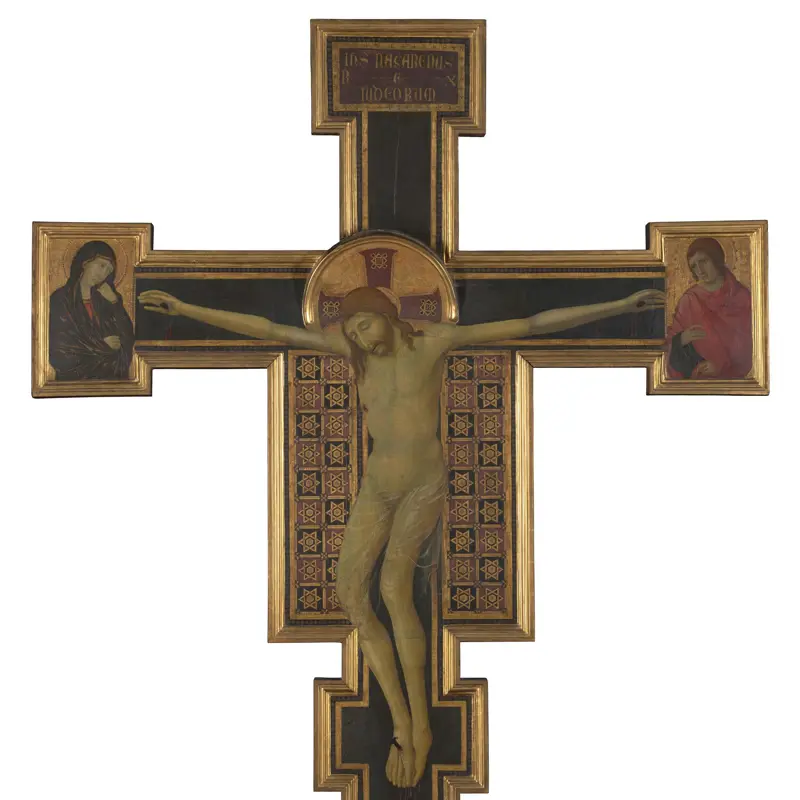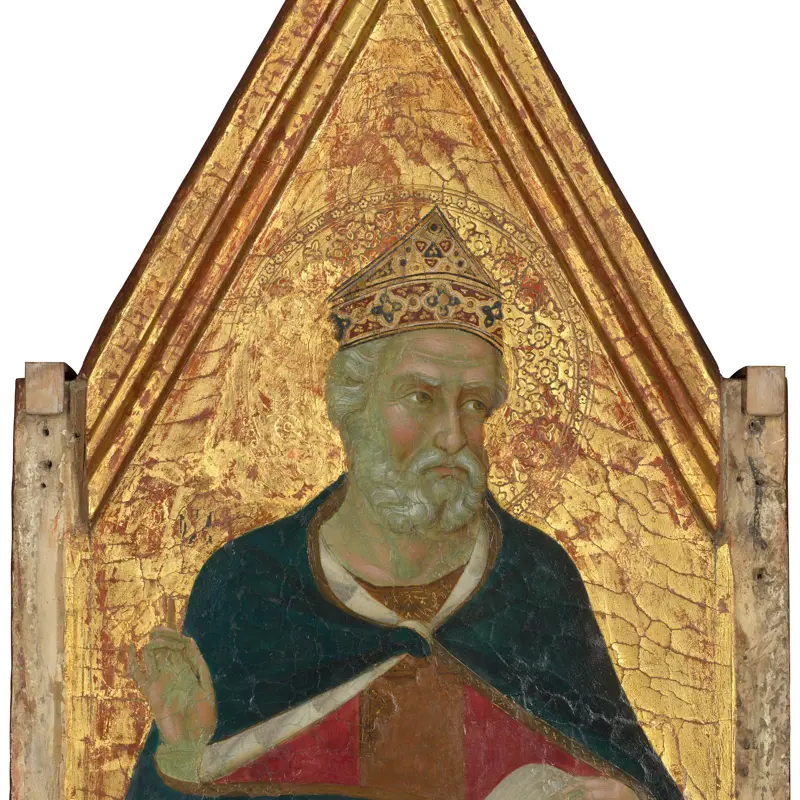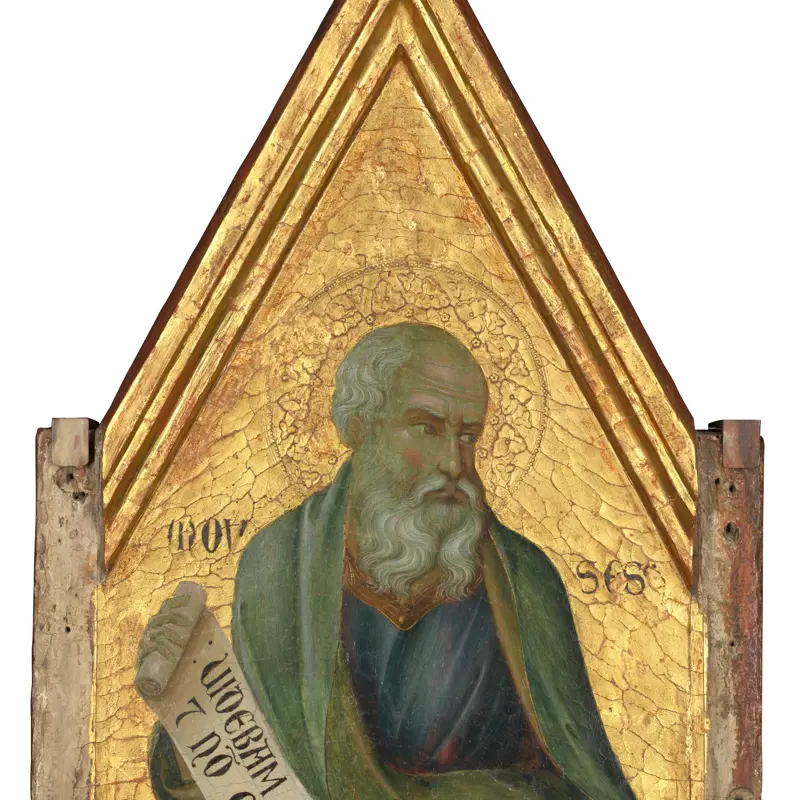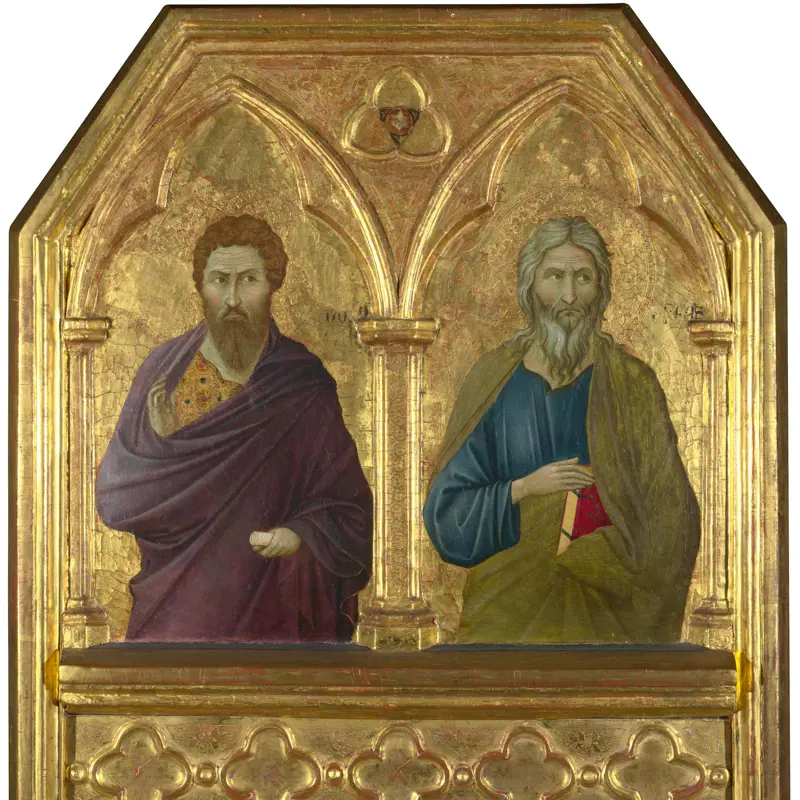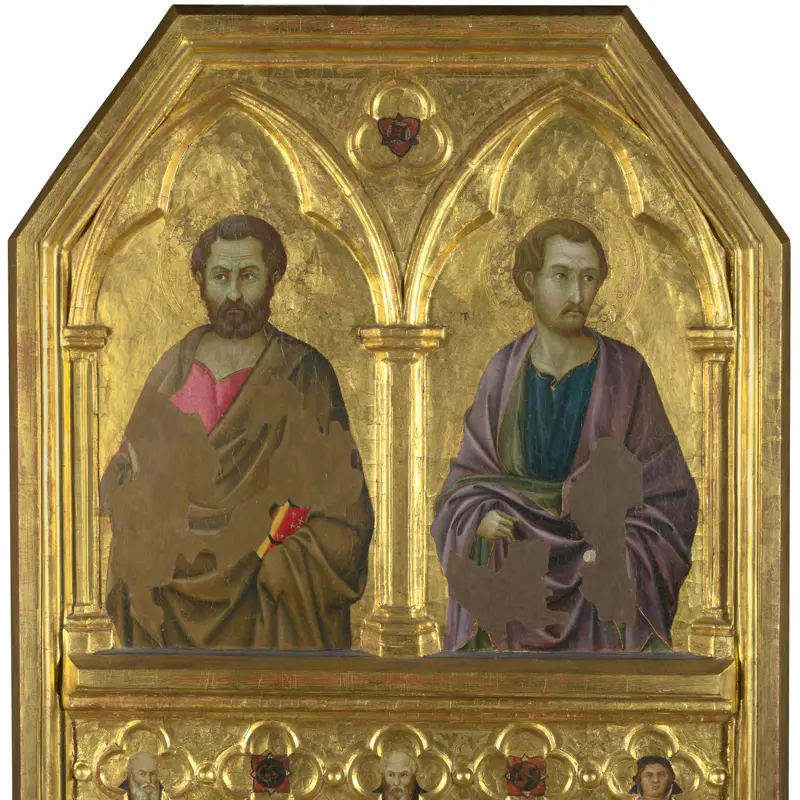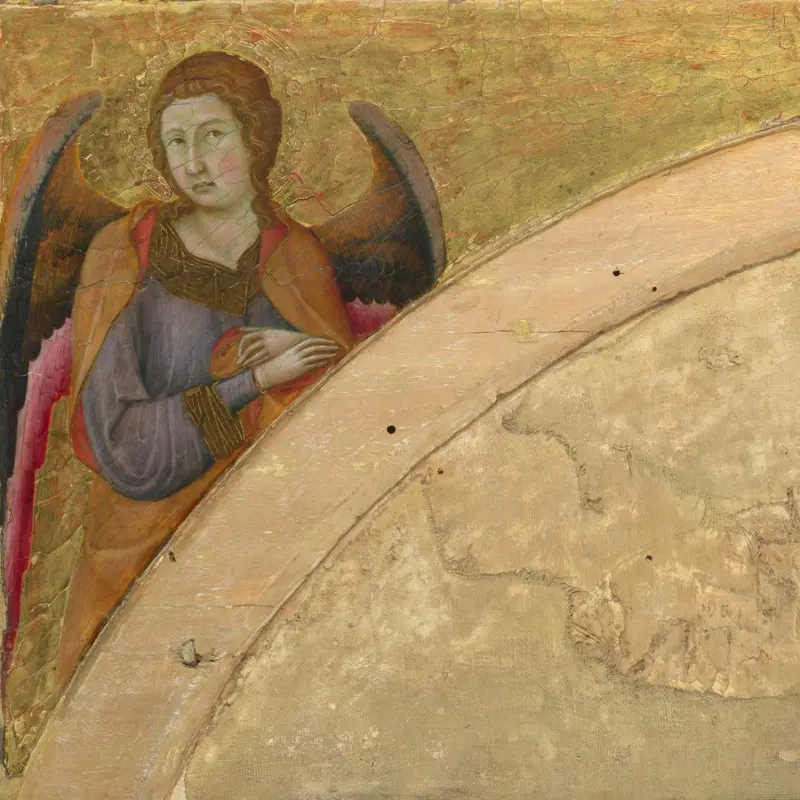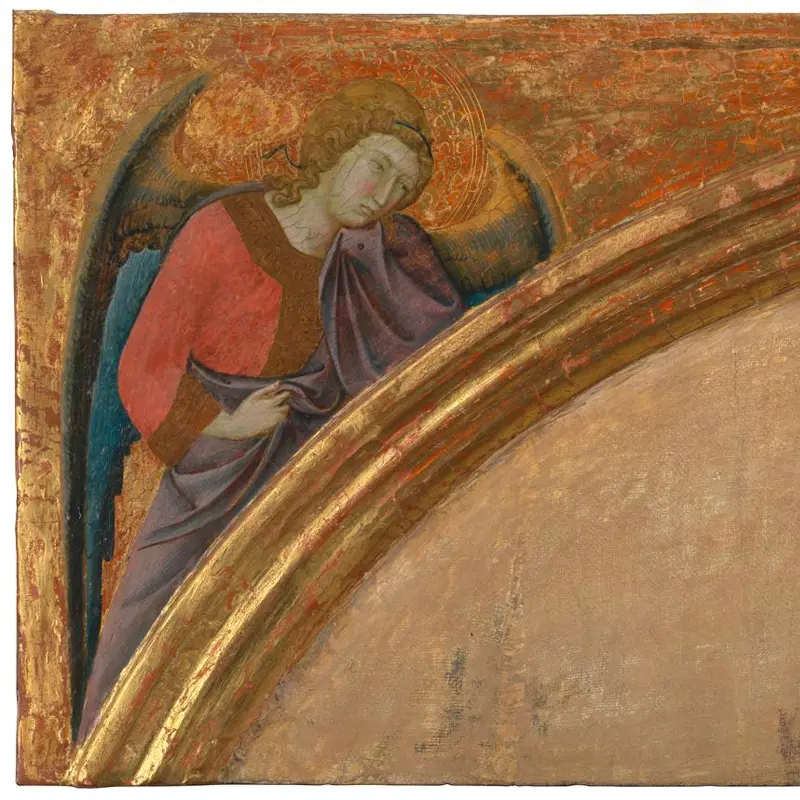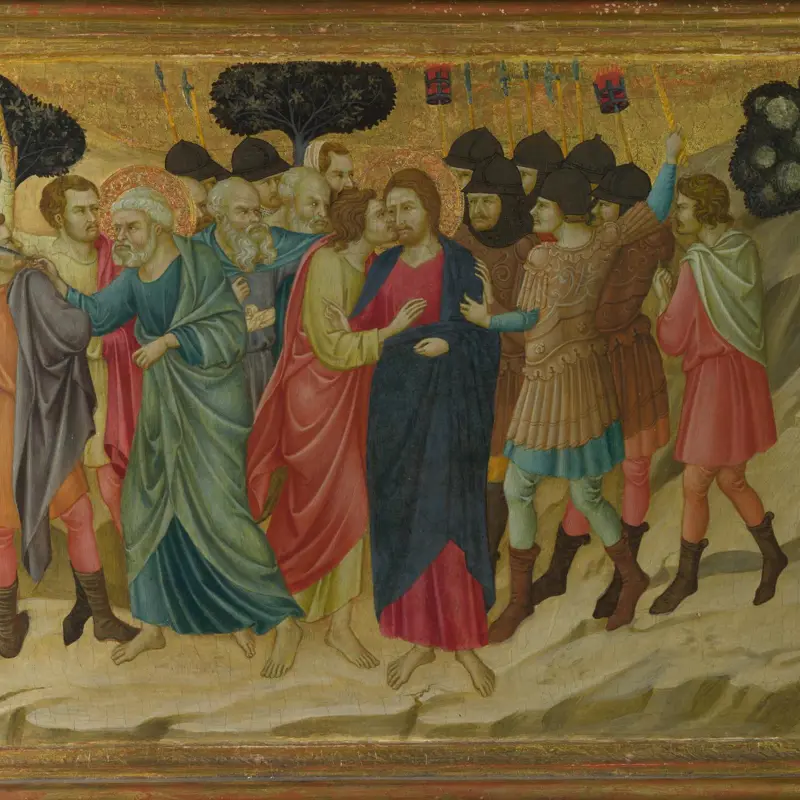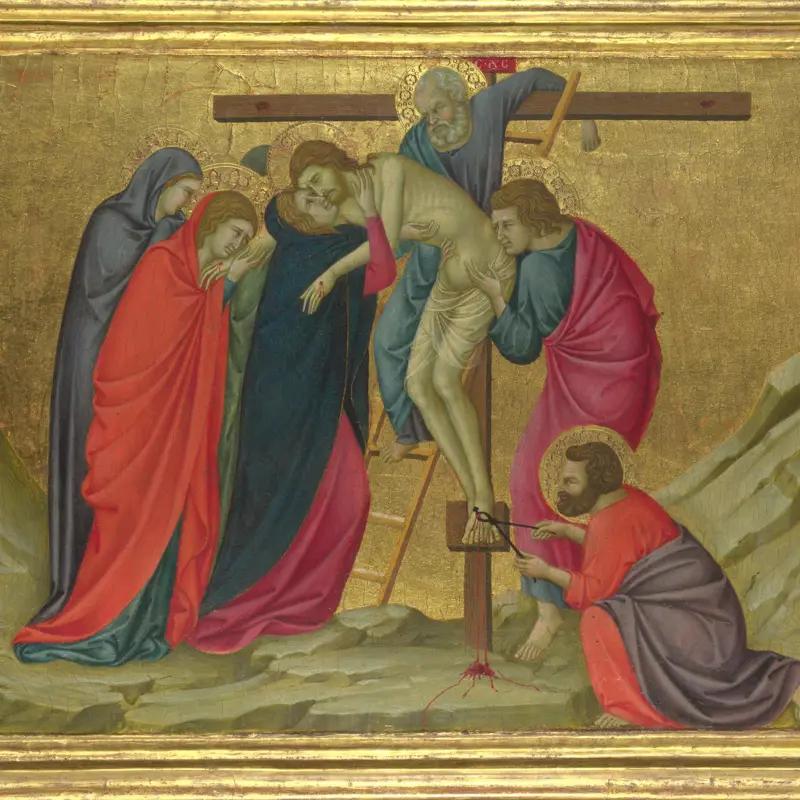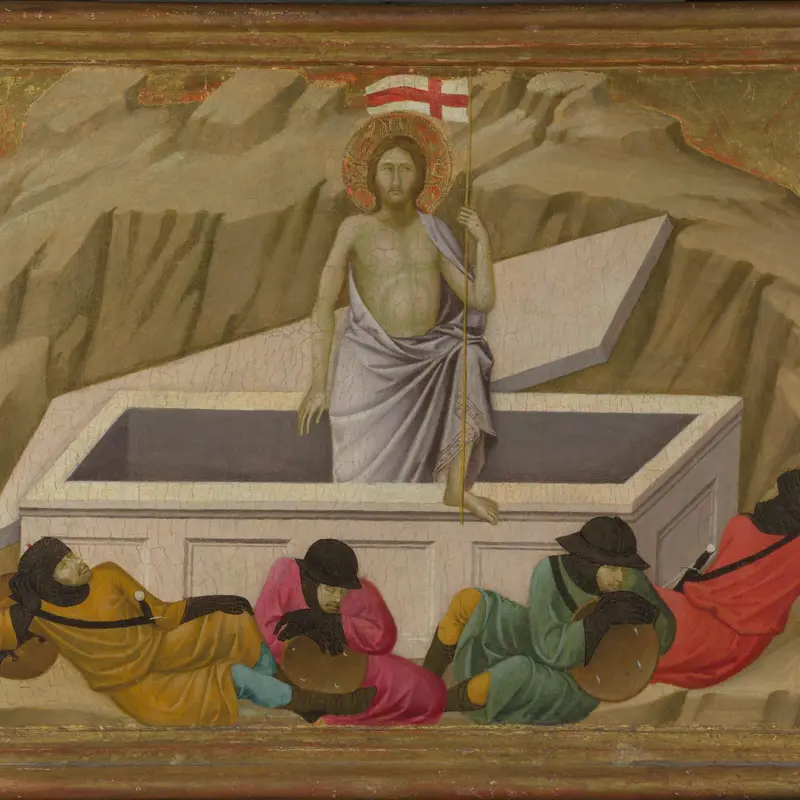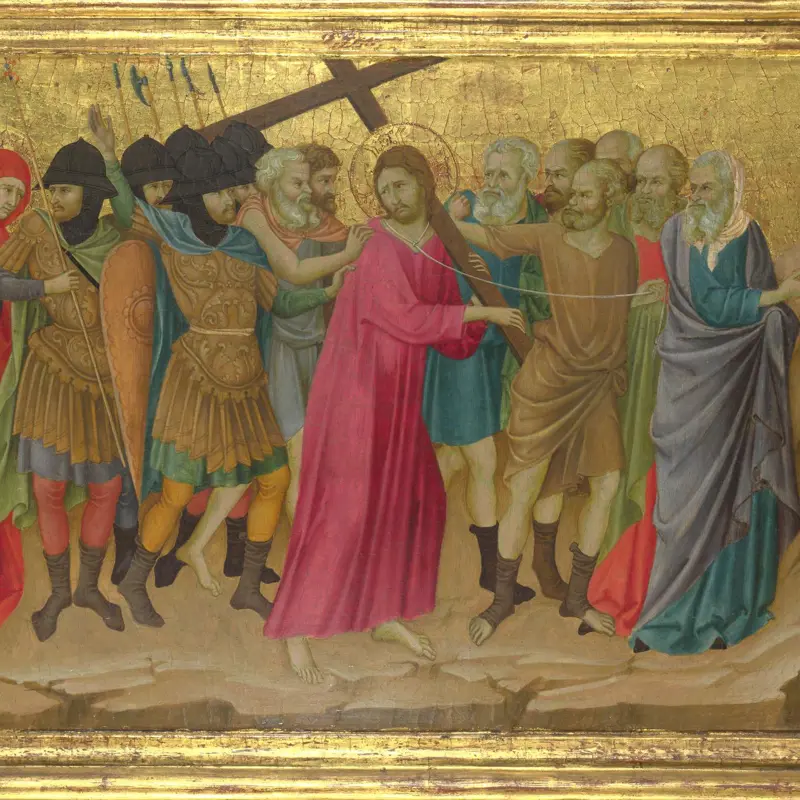Siena was a leading political and artistic centre in 14th-century Tuscany. The city had a special devotion to the Virgin Mary, and its citizens considered themselves under her protection. She was a favourite subject among art patrons in Siena and its regions.
Duccio painted the Virgin and Child at the centre of a heavenly court of saints and angels in his majestic Maestà. This double-sided altarpiece was installed on the high altar of Siena’s cathedral in 1311. The Maestà was admired there by citizens, visitors, pilgrims and painters. This room contains panels from its predella (base) as well as many fragments from other altarpieces that were inspired by the Maestà.
The next generation of artists in Siena learnt their craft from Duccio and developed new approaches to narrative painting. They worked on both a monumental and miniature scale for churches and clients in Siena and beyond. Later Sienese artists continued to use the iconic gold backgrounds and bold storytelling of their predecessors. At the same time, they engaged with artistic advances going on elsewhere in Italy. Sassetta was famous for his sweet and delicate approach to painting holy subjects, while Giovanni di Paolo is best known for his lively narrative scenes.


